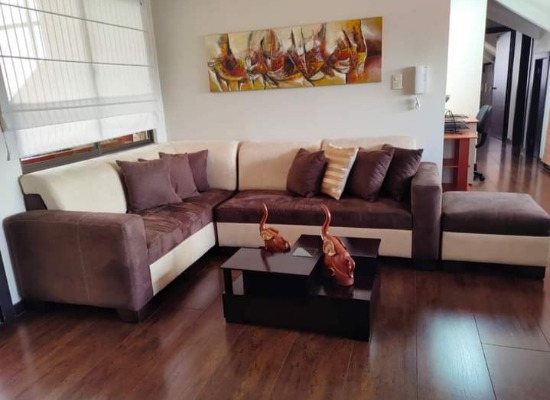Expat artist laments the decline of the art market

I recently visited Claudio Alberto Soriano Vitorino, perhaps the most famed artist in Cuenca’s expat community. We met in his studio at IdiomArt.

It was readily apparent that his sanctuary is not a gallery; it is a launchpad for the formidable creative energy that reflects his distinctive style of blending fantasy with earthiness. Elephants are plodding down a village street, three men are drinking wine and looking serene as houses tumble from the sky, a young boy rides his bicycle, and a little blue dog roams among them all just as he does in every painting.
formidable creative energy that reflects his distinctive style of blending fantasy with earthiness. Elephants are plodding down a village street, three men are drinking wine and looking serene as houses tumble from the sky, a young boy rides his bicycle, and a little blue dog roams among them all just as he does in every painting.

I asked Alberto, an expat from Peru, to share his insight on the art world of Ecuador and was impressed by his contemplative response.
He said, “ The art market is starting to recover, but will never be anywhere near the same as it once was,” But, when I asked how the pandemic altered the landscape he said it was not a virus that crippled art in Ecuador. It was corruption, greed, and ineptitude — the disintegration of Ecuador’s standard of accountability — the abandonment of the sucre. The year was 1999.

Soriano said that artwork, particularly canvas paintings, was once the center post of most homes in Ecuador. Folks spoke of artists as they now do athletes, and households collected art like kids do baseball cards in the U.S. Their names were commonly mentioned, their exploits the grist of gossip. However, as foreign interests increasingly influenced the country’s emergence on the world stage, paintings were designated an oversized role. Watercolors and acrylic dominated the ‘portfolio’ of banks and other financial institutions; Ecuador’s finest artists’ creative output was scooped up and stashed away in vaults like banknotes, for investment purposes. The higher-end art market was booming worldwide, and Ecuador wanted some. The stability of the economy soon rested on thin sheets of canvas splashed with pigment. And then, the inevitable happened, a top-heavy bureaucracy honeycombed with sweetheart deals collapsed. The land was taken for taxes, ancient forests were cut down and sold to the mills, and artwork, the creative output of Ecuador’s most precious resource, was placed on the auction block of indifferent ‘brokers’ and sold off for pennies on the dollar — like recycled newsprint.

When the banks divested their holdings the population did too. The value of art became so depressed that many of Ecuador’s finest artists could no longer support themselves and sought refuge in Europe and North America, thereby depleting an already endangered resource and their influence.
The regime of Rafael Correra was another devastating blow. Correra did not think that art was relevant for “the people,” so he strip-mined the House of Culture and cobbled together a shanty — the Ministry of Culture — in its place. But, it was not a house nor a home; it was a hornet’s nest of political hacks bent on gorging themselves on political favors, and replacing investing in art for the country to investing in condominiums in Miami for their personal retirement.

With accessibility to art no longer readily available, the people of Ecuador turned their attention elsewhere, further depleting the resource. Cars replaced canvas as a showpiece of progress, quiet brushstrokes were replaced with a blunderbuss of noise and meaningless sparkle. Pastel colors were faded in the desert of neglect.
Alberto explained that the arts and crafts community has always relied on foreigners for support. He was clear. 95% of his patrons are fellow expats. He said the loss of their contribution to the arts has been devastating to the creative welfare of the entire community and cast shade on dreams of the future.
In order to make ends meet, and to assist the truly talented, Soriano has over the years accepted a small collective of budding and intermediate artists to offer advice on technique and composition, but his strongest suit is inspiring those in his care to keenly investigate the visions each carries. He was once offered a teachers position in the art department of the University of Cuenca but turned it down.

“I am an artist, not a bookkeeper,” was his prompt reply.
Soriano is amazingly sanguine regarding the future of art in Ecuador. He laments that his calling, canvas art, is in what may be a permanent decline. But, he is willing to embrace conceptual, and video art under one caveat — one must learn their craft.
“Technique is paramount. No one is an instant artist. It requires sacrifice, dedication, and endless hours of reflection and patience for the muse to wind her way through the morass and emerge into the light. You must be prepared to do her bidding.”























